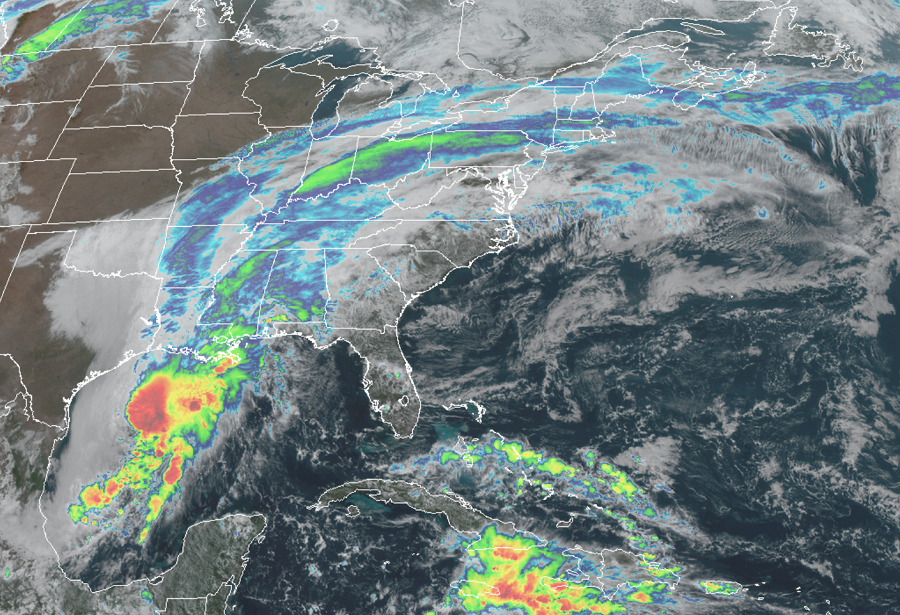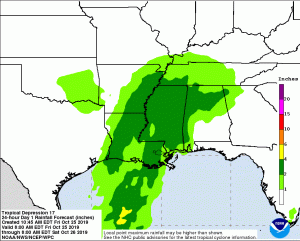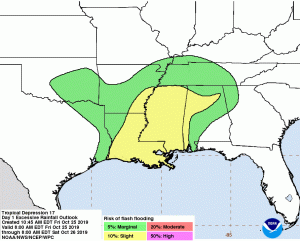
A tropical cyclone has formed in the Gulf of Mexico. Now known as Tropical Depression #17, the system could become a named cyclone before it hits the central Gulf coast. While tropical storm force wind gusts are expected, the system may not become a true tropical storm due to its structure and mechanics. Despite the meteorological technicality with what it’s being referred to as, residents of the central Gulf coast and beyond should prepare for its arrival.

As of the last update from the National Hurricane Center, the center of Tropical Depression Seventeen was located near latitude 25.6 North, longitude 94.4 West. The depression is moving toward the north near 16 mph. According to the National Hurricane Center, a motion toward the north-northeast at a faster forward speed is expected this afternoon through Sunday. On the forecast track, the center of the cyclone should move across the northwestern Gulf of Mexico this afternoon and then move over the northern Gulf coast tonight or Saturday morning. Maximum sustained winds are near 35 mph with higher gusts. Some strengthening is expected today, and the depression could become a tropical storm this afternoon; however, it wouldn’t remain a tropical cyclone for long. The forecast calls for it to merge with an approaching cold front and become a post-tropical low with gale-force winds tonight before the center reaches the Gulf coast. For now, the estimated minimum central pressure is 1006 mb or 29.71 inches.
This system will bring different weather hazards with it: flooding rains, coastal flooding, and the threat of isolated tornadoes. The depression and rainfall ahead of the system along and north of the frontal boundary across the Central Gulf coast is expected to produce total rainfall accumulations of 2 to 4 inches with maximum totals of 8 inches across the Central Gulf coast into the Lower Mississippi Valley through Saturday morning. These rains may produce flash flooding across the Central Gulf coast into the Lower Mississippi Valley. Above-normal tides and associated coastal flooding are possible across portions of the northern Gulf coast. A couple tornadoes are possible through tonight across southeast portions of Louisiana and Mississippi into southwest Alabama.

Beyond landfall, the storm system is expected to bring heavy rains and gusty winds up the Mississippi River Valley and eventually over to the Ohio Valley and Mid Atlantic with time. Both the Mid Atlantic and New England could see very heavy rain on Sunday from the remnants of this system and the frontal system it is merging with.